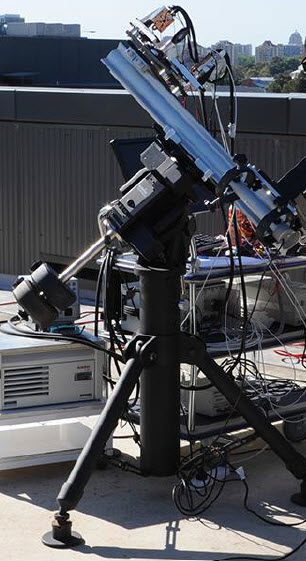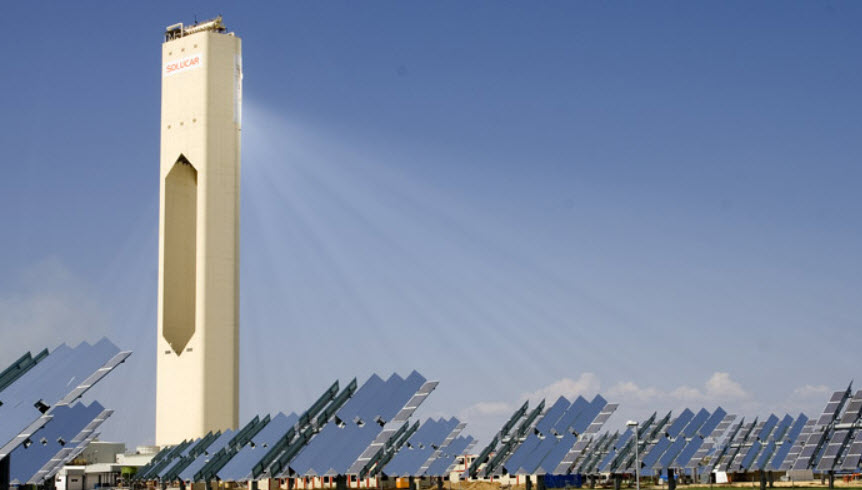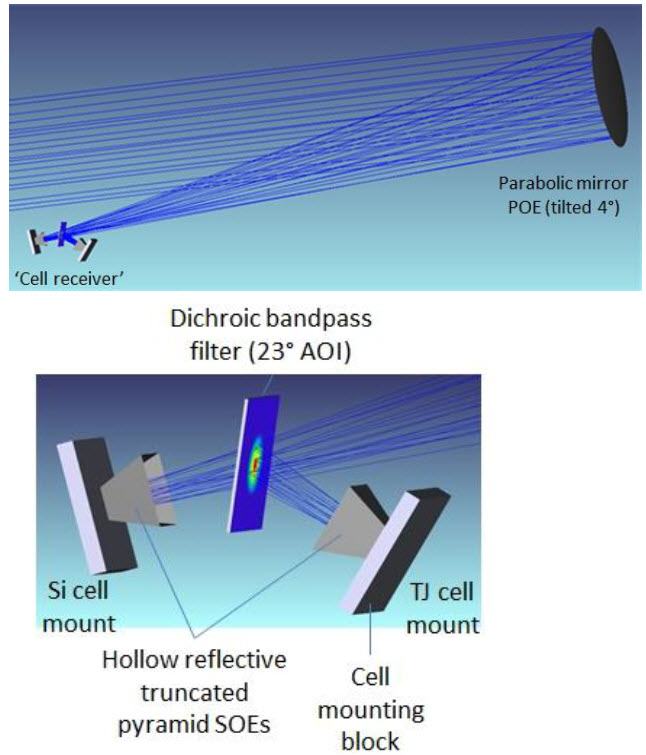Australian researchers set new world record in solar-energy efficiency
December 8, 2014

Spectrum splitting prototype (credit: UNSW)
University of New South Wales (UNSW) solar researchers have converted more than 40% of the sunlight hitting a solar system into electricity, “the highest efficiency ever reported for sunlight conversion into electricity,” UNSW Scientia Professor and Director of the Australian Centre for Advanced Photovoltaics (ACAP) Professor Martin Green said.
“We used commercial solar cells, but in a new way, so these efficiency improvements are readily accessible to the solar industry,” added Mark Keevers, PhD, the UNSW solar scientist who managed the project.
The researchers used Concentrated photovoltaic (CPV) technology, which uses optics such as lenses or curved mirrors to concentrate a large amount of sunlight in solar power towers.
A key part of the prototype’s design is the use of a custom optical bandpass filter to capture sunlight that is normally wasted by commercial solar cells on towers and convert it to electricity at a higher efficiency than the solar cells themselves ever could. Such filters reflect particular wavelengths of light while transmitting others.
The 40% efficiency milestone is the latest in a line of achievements by UNSW solar researchers spanning four decades. These include the first photovoltaic system to convert sunlight to electricity with more than 20% efficiency in 1989; the new result doubles this performance.

The PS10 Solar Power Plant in Spain concentrates sunlight from a field of heliostats onto a central solar power tower, generating 11 megaWatts (credit: Abengoa Solar, S.A.)
“The new results are based on the use of focused sunlight, and are particularly relevant to photovoltaic power towers being developed in Australia,” Professor Green said.
Compact power towers are being developed by Australian company RayGen Resources, which provided design and technical support for the high efficiency prototype. Another partner in the research was Spectrolab, a US-based company that provided some of the cells used in the project.

Optics of the spectrum splitting prototype, modeled in the 3D ray tracing software Zemax. Incoming sunlight in a solar power tower is reflected down to a silicon solar cell receiver. (Credit: UNSW)
The 40% efficiency achievement is outlined in a paper expected to be published soon by the Progress in Photovoltaics journal. It will also be presented at the Australian PV Institute’s Asia-Pacific Solar Research Conference, which begins at UNSW today (Monday December 8).
The result was achieved in outdoor tests in Sydney and independently confirmed by the National Renewable Energy Laboratory (NREL) at their outdoor test facility in the U.S. The work was funded by the Australian Renewable Energy Agency (ARENA) and supported by the Australia–US Institute for Advanced Photovoltaics (AUSIAPV)